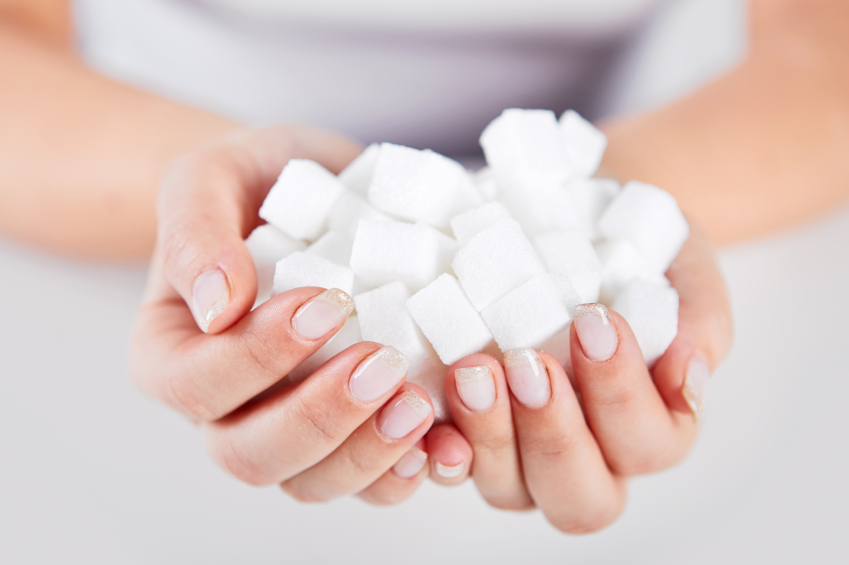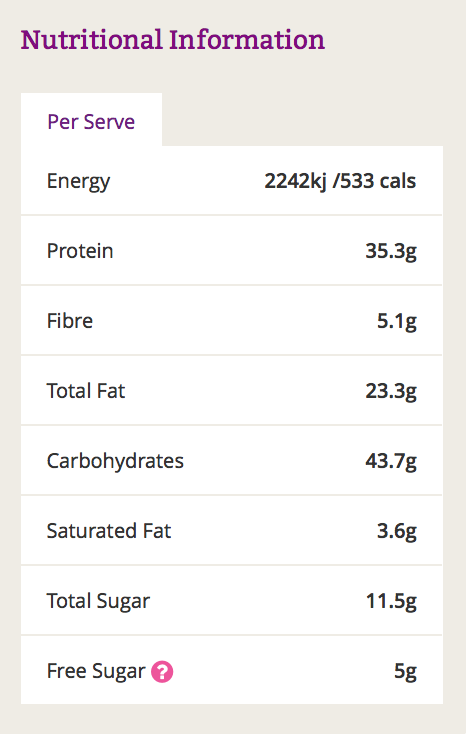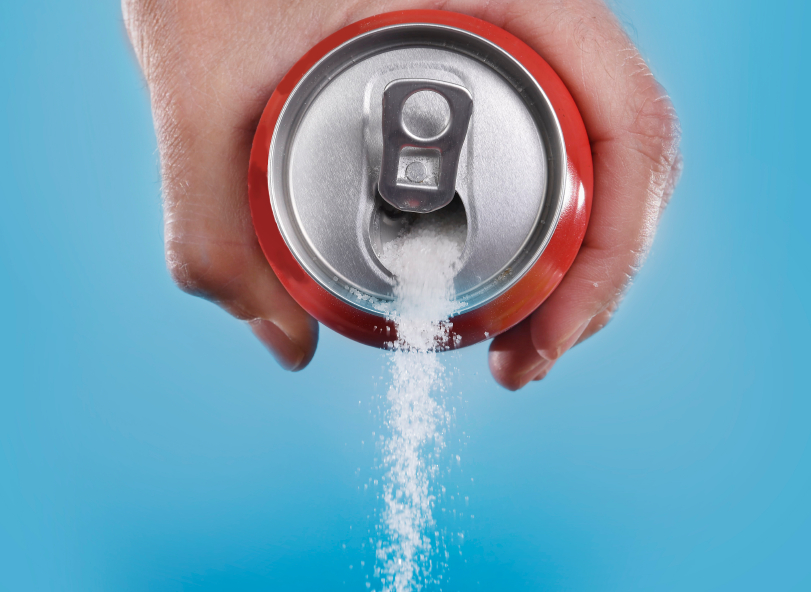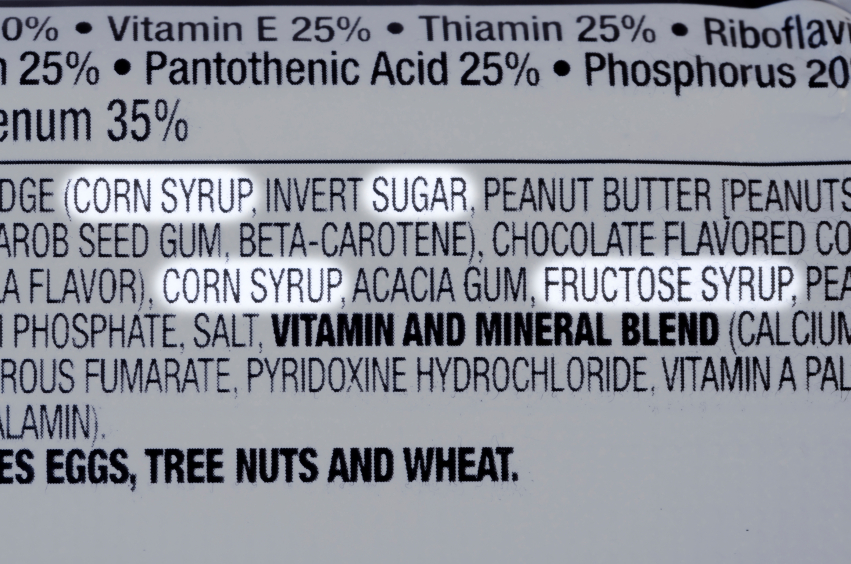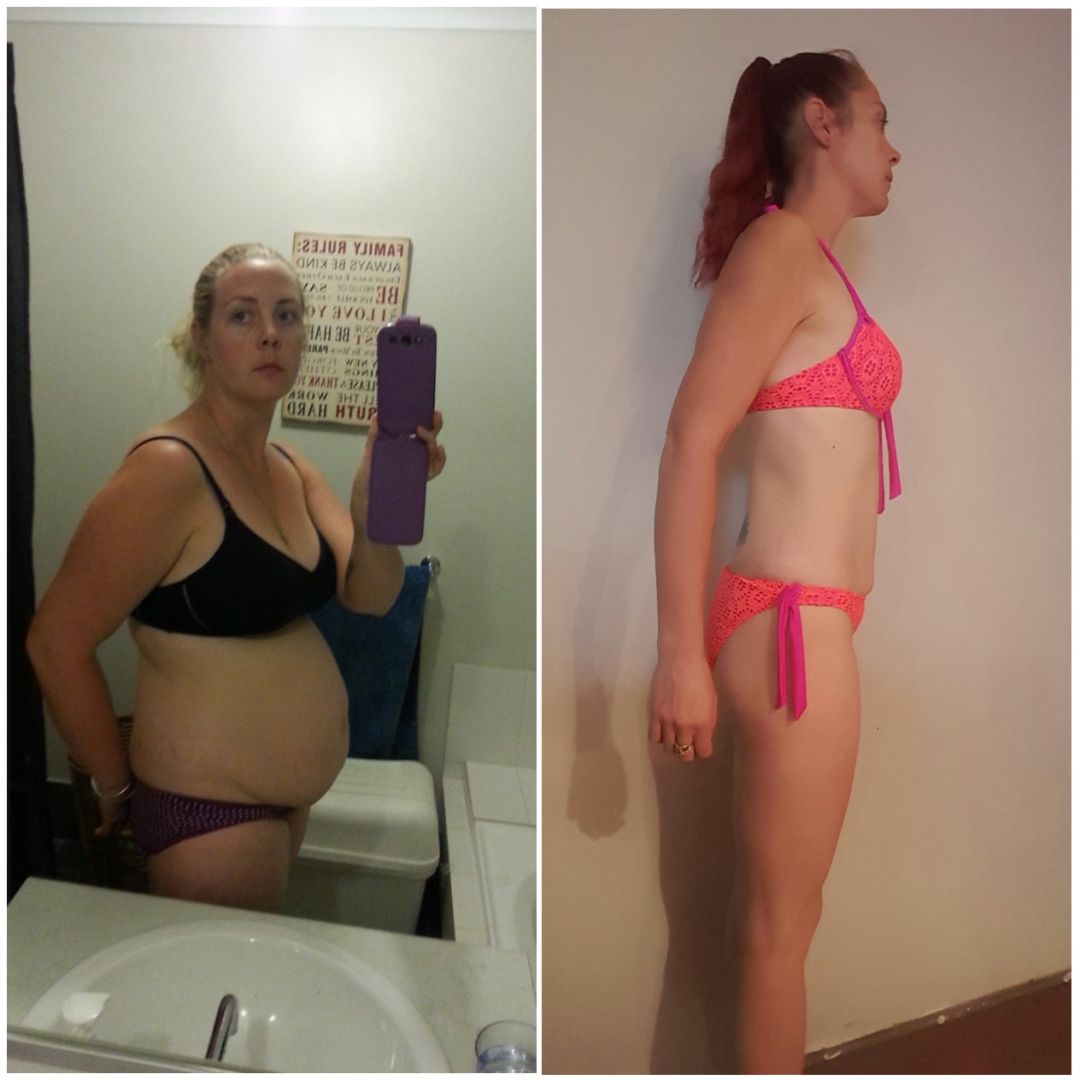There is so much information around about sugar consumption; how much we should eat, which sugars are ok to eat, how to reduce it in our diets etc. that things can get quite confusing!
Cheree Sheldon, Nutritionist for the 28 Day Weight Loss Challenge, has answered some of the most common questions about sugar so you know what are the best choices and things to consider when trying to reduce sugar from your diet:
Is sugar “bad” for me?
The 28 Day Weight Loss Challenges and meal plans are all about balance. Our meal plans are about getting a good variety of whole foods into each day. We don’t cut out whole categories of food; instead we prefer to find the healthier alternatives.
Sugar provides our bodies with energy but it’s the types of sugar we choose and how much we eat that can potentially lead to poor health and long term issues.
We need to choose the healthier types of sugar and reduce our overall consumption to avoid it being “bad” for us.
How much sugar should we consume each day?
The current World Health Organisation (WHO) recommendations that were released in 2015 state that everyone should reduce their “free sugar” (i.e. simple, added sugars) intake to less than 10% of their total energy intake, but a further reduction to below 5% would provide further health benefits.
So this means that if you eat approximately 1500 calories per day then 10% of your daily energy intake would be 150 calories, approximately 40g of sugar (about 10 teaspoons).
WHO recommends we try and reduce our intake to 5% to improve the health benefits even more. So with 1500 calories per day this is approximately 20g of sugar or around 5 teaspoons.
The key thing to remember is that the WHO recommendations are referring to the amounts of “free sugars” we consume not sugars found in whole foods.
What do you mean by “free sugar”?
Like with fats, there are some fats that are better to eat than others. The same with sugar. The World Health Organisation defines “free sugars” as: “all monosaccharides and disaccharides added to foods by the manufacturer, cook, or consumer, plus sugars naturally present in honey, syrups, and fruit juices”.
Free sugars are those found in processed foods, fruit juices and concentrates, basically in anything that isn’t in its natural state. For example strawberry flavoured yoghurt may seem fairly unprocessed but the flavouring has been processed and then added to the yoghurt and this usually means free sugars have been added.
If you took a plain, natural yoghurt and added some slices of strawberry yourself then you would be avoiding free sugars.
Sugars that are present in WHOLE FOODS e.g. in fruit, grains, dairy, etc. are not “free sugars” and aren’t included in the daily sugar consumption recommendations by WHO.
What do you mean by sugars in Whole Foods?
These are the sugars that are present in natural, unprocessed foods. So the sugars in fruit, vegetables, grains, dairy etc.
These sugars AREN’T included in the WHO sugar consumption recommendations.
When a food is in its WHOLE and NATURAL form, like a piece of fruit, or full fat milk, then the other elements in the food balance out the sugar and our bodies can cope with it. The fat in milk helps to slow down the processing of the lactose, and the fibre in fruit does the same with the fructose.
It is when these sugars have been isolated and then added into foods as single ingredients that the mega problems arise.
But I thought honey was good to consume as it’s natural?
Most sugars are natural. White, granulated sugar comes from sugar cane, a natural source. Artificial sweeteners are the only sugars that aren’t natural.
Honey, maple syrup, molasses, rice malt syrup, brown sugar, coconut sugar, agave syrup etc are all natural and are ALL “free sugars”.
When choosing a sugar to eat and use in your cooking, choose one that has a lower GI, to avoid spikes in blood sugar levels, and some other beneficial properties.
So for example, honey is a better choice than brown sugar as it has a lower GI and also contains some minerals that give the body some nutritional benefits.
Trying to stick to the WHO recommendations for sugar consumption means you may have to reduce your intake of sugars like honey, maple syrup, coconut sugar too but choosing these sugars over higher GI sugars with less nutritional benefits is a better option.
 Which sugars are better to consume?
Which sugars are better to consume?
Sugars in WHOLE FOODS are not included in the WHO daily sugar allowance recommendations so if you are sweetening your meals with fresh fruit, vegetables, grains, protein and dairy then this is the best way to enjoy sweet food.
If you want to use “free sugars” which are really hard to avoid totally (and don’t need to be if consumed according to WHO recommendations) then choose sugars with a low GI and one that may have some other nutritional benefits. For example coconut sugar has a relatively low GI of 35 and also contains potassium and minerals to benefit the body.
Maple syrup and honey have mid range GI levels with some mineral benefits.
Stevia has a 0 GI and therefore breaks down very slowly in the blood. It is also 300 times sweeter than granulated sugar so you don’t need to use as much in your cooking and meal preparation.
View the sugar comparison table here to help you make BETTER informed choices about sugar
Why should I reduce my sugar consumption?
Exceeding the recommended intake of sugar can lead to a number of health issues including; ADHD, acne, obesity, gallstones, insulin resistance, Type 2 diabetes, PMS, dental cavities and depression.
Sugar can also do a myriad of other damage. It can feed candida and cause bowel, bladder or skin issues, it can interrupt sleep and may induce nightmares, it can limit your ability to focus, and it can cause aggression and change behaviours.
Excessive sugar consumption can increase blood sugars, and as a result hypoglycemia can occur. Symptoms will appear 3-4 hours after eating and may include one or many of the following: anxiety, irritability, headaches, confusion, aggressive behaviour, sweating, confusion and even convulsions.
Sugar can alter the way a cell in the body responds normally to other cells; they can change the structure of proteins, and can disguise cancer cells from our immune system.
Have you ever over indulged in the mid afternoon (“3pm slump”), thinking a chocolate bar or something sweet will give you the energy to make you feel better? Then after eating your sweet choice you actually feel more tired, without energy? This is due to some sugars breaking down too rapidly in the body, causing an excess of blood glucose. What we want to achieve is a slow rise in blood glucose after we eat, not a big spike and crash.
Any excess glucose left in our blood that the body doesn’t need is turned into FAT. So reducing your overall sugar consumption and being mindful of how much you are consuming is good for your waist line.
Reducing the amount of sugar you and your family consume will benefit everyone, setting a great example for your children to help them make the right food and drink choices and avoid the health issues that too much sugar can bring.
Some of the 28 Day Challenge meals seem to have high sugar totals?
This is because the sugar totals in each recipe/food include both “free sugars” and sugars from “whole foods”.
It’s the “free sugars” that we should be trying to reduce in our diets, so look at these figures when working out if a recipe/food has low or high sugar content. Whole food sugars aren’t counted in our daily sugar intake.
We also break down the nutritional comparison table on each recipe so that is has the total sugar and free sugar amount – so you are better informed.
It seems so hard to stick to the WHO sugar recommendations. How can I do it?
Once you’re aware of the types of sugars you need to reduce then it is pretty amazing how much sugar is added to so many foods and it can be a little scary!
The best way to stick to the recommendations is to do things slowly. If you enjoy sugar in your tea or coffee, make a plan to reduce the amount by half for a week, then another half the following week, until you are no longer adding sugar at all and can enjoy your drinks sugar free.
If you love chocolate, lollies, cakes etc then try some of the low “free sugar” recipes from the 28 Day Challenge recipe hub to replace any processed foods of this type. Making these types of foods at home will ensure you know exactly how much sugar is being added and you will also avoid artificial colourings, flavours and preservatives.
Slowly changing your sugar consumption will allow your tastebuds to get used to not having so many sweet flavours so that you are satisfied with smaller amounts of sugar in your diet.
Reducing your overall sugar intake doesn’t mean you can’t enjoy a scoop of ice cream or a chocolate bar every now and then. It means that once you know what levels of sugar you should aim for each day, when you do indulge in something high in free sugars, that you can balance this out by having low free sugar meals and food for the rest of the day.
Using more whole foods and sweetening foods with these ingredients rather than lots of processed foods loaded with “free sugars” will result in you not craving really sweet things all the time and benefit your family’s health too.
View the sugar comparison table here to help you make BETTER informed choices about sugar
I’ve started reducing the sugar in my diet and I feel terrible! Why?
Everyone will experience dietary change differently, but depending on your current sugar intake and how drastically you reduce it, you may have side effects such as headaches, skin breakouts, or bowel changes (excess sugar for some people can be a laxative, so reducing this may clog you up until your body can regulate itself again).
The best advice, to try and avoid these side effects, is to reduce sugar slowly and permanently. If you go cold turkey and completely stop consuming all sugars at once you can experience horrible withdrawals, and give in to cravings, that may put you off wanting to reduce your sugar intake all together!
Every lifestyle change you decide to make for the benefit of your health should be slow, steady, and LONG LASTING!
- Set yourself a limit everyday and stick to it. If you normally add 3 teaspoons of sugar to your tea, reduce it to 2 for a week, then reduce it to one, then 1/2, until you can enjoy your tea naturally.
- Make SMART goals when it comes to changes. Is your goal achievable, realistic, do you have support?
- Tell your family, friends and colleagues what you are planning and get them on board. Make changes with your family, and with a buddy at work, so you can support each other…
- If you feel like you are having enormous cravings for sugar that even with the alternatives they won’t go away, then speak to a naturopath and get some nutritional support to help balance out your blood sugars while you make dietary changes.
- Another MASSIVE problem can be unconscious eating and emotional eating. If you feel like this is you, then speak to a counsellor or find someone who is experienced in food psychology to work through these issues. A good hypnotherapist may help as well.
Where does sugar hide in food?
Food manufacturers will hide sugar anywhere!! Seriously! As an industry, they only care about a product selling, and how do they get it to sell? They make it taste nice. Unfortunately for us as consumers this often means a whole gammet of hidden treasures, flavour enhancers, artificial flavours, and a multitude of sugars amongst their tricks.
Learning to read food labels is pretty much your only way of gaining control over which processed foods you should eat. If you believe the claims they put on the front, without sussing out the back, then you may fall for the marketing tricks.
For example; food manufacturers have led us to believe that all fat is bad and often put on the front of packaging in massive writing “FAT FREE” or “LOW FAT”. Some of the products that these claims are on however have NEVER had fat in them, such as marshmallows. The humble marshmallow when made traditionally should be sugar, gelatin, and vanilla. No fat in sight. But a LOT of sugar!
So, by reading the claim on the packaging that they are fat free, may lead some people to believe that they are either a healthy treat, or that they are not “unhealthy”… BUT at a whopping 76% sugar, they provide nearly 5 teaspoons of sugar in one serve (which is about 84% of your daily recommendation depending on how many calories you consume per day)
Look out for hidden sugars in every bit of processed food that you may consume. Including the savoury ones. Typical products that have hidden sugars are tomato sauce, BBQ sauce, muesli bars, biscuits, breakfast cereals, some chips, yoghurt, even olives.
Read the ingredients list, any ingredient that ends in OSE is a sugar. Sugars you may find lurking in foods are corn syrup, fructose syrup, glucose, maltose, and fruit juice concentrates.
A food in its real state is always best than one that has been altered.
View the sugar comparison table here to help you make BETTER informed choices about sugar
What are some good tips to help reduce my sugar intake?
- Stop adding the little sugar crystals to your foods and drinks. If you need to sweeten your tea or coffee than use stevia or xylitol as they will not affect your blood sugars.
- Give up soft drinks but do not replace them with artificially sweetened versions. Instead choose sparkling mineral water and flavour with lemon or lime wedges.
- Choose wholegrain breakfast cereals that do not have added sugars. Make your own muesli, choose oats, quinoa flakes, or eggs rather than bowls full of colour and sugar!
- Instead of a pastry or cake for snack time, select something fresh and savoury like hummus with carrot sticks. If you must have something sweet, make your own healthier versions, freeze in small portions and take them with you.
- Use the low sugar recipes from the 28 Day Weight Loss Challenge to make healthier versions of processed and often sugar laden meals like breakfasts, lunch box snacks, afternoon tea and desserts.
- Read the labels on everything! Even yoghurt can have copious amounts of sugar added to it.
Cheree Sheldon, Nutritionist
View the sugar comparison table here to help you make BETTER informed choices about sugar
Results from mums on the 28 Day Challenge
Mums lose an average of 4-6kg (8-13 pounds) on our 28 Day Challenge and below are some of the amazing results from mums JUST LIKE YOU who are already using the 28 Day Challenge and losing tummy fat – make the change and join them today too!
You can see lots more results and you can join here too
Andrea Lost 30kgs* with the 28 Day Challenge
Andrea says: “My happiness has improved 100%, my confidence is building and my patience with my family is so much better because I am happy with my self.
The meals are not hard or complicated and can sometimes feel so naughty. This helped me with the struggles I have had on previous diets that I am missing out on delicious food.
Every meal I have made has been amazing and got my family’s tick of approval.”
Join now
You won’t regret it!
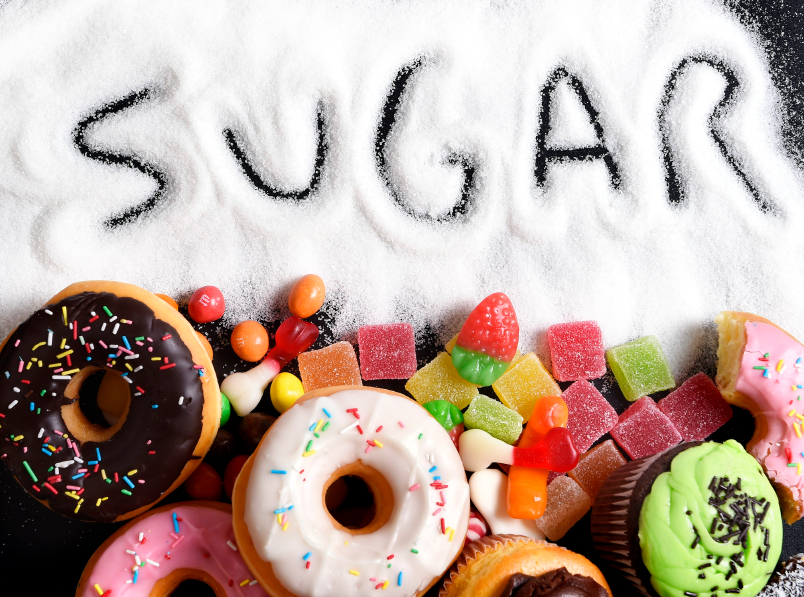
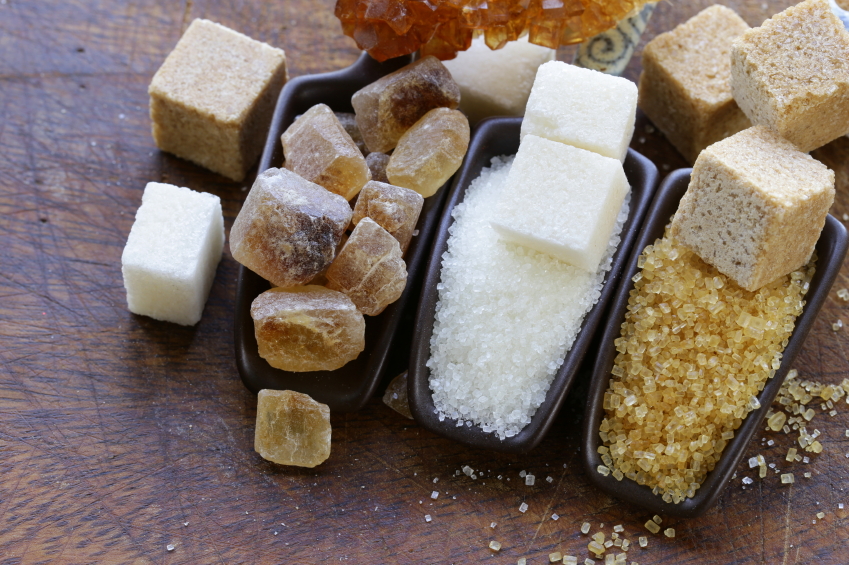 Which sugars are better to consume?
Which sugars are better to consume?